Historical Celebration
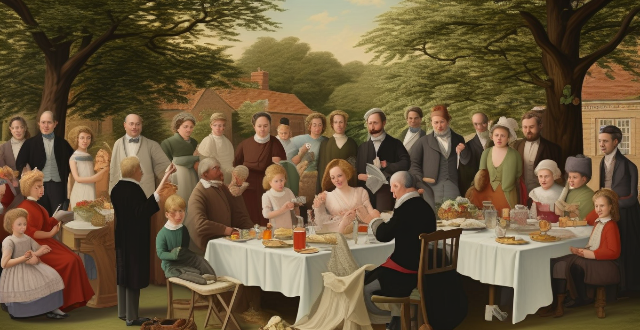
What are some creative ways to celebrate the Fourth of July ?
Independence Day, or the Fourth of July, is a significant holiday in the United States that celebrates the adoption of the Declaration of Independence in 1776. To make your celebration unique and memorable, consider these creative ideas: host a themed party with patriotic colors and drinks; organize a family relay race based on historical events or symbols; have a movie marathon with American films; create a time capsule to be opened in the future; participate in community events; set up a fireworks display at home (with safety precautions); engage in patriotic crafts and DIY projects; host a barbecue cook-off; visit historical sites or museums; and write letters to service members. These activities not only add fun to the celebration but also provide educational value and an opportunity to express gratitude for American values and freedoms.

How can I make my birthday celebration more exciting and different from previous years ?
How to make your birthday celebration more exciting and different from previous years: 1. Set a theme that reflects your personality or interests. 2. Plan a unique activity that you haven't done before or haven't done in a long time. 3. Invite new people to bring fresh energy and excitement to the event. 4. Personalize the decorations to reflect your style and preferences. 5. Plan a surprise for yourself during the celebration, such as a special performance or unexpected guest appearance.
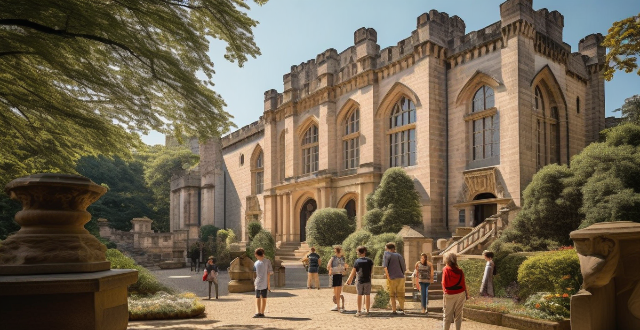
How can I improve my understanding of historical events and dates ?
To enhance your understanding of historical events and dates, start with introductory books for a broad overview before diving into subject-specific literature. Watch educational videos and documentaries for visual learning. Visiting museums and historical sites offers tangible connections to the past. Engaging with online courses and lectures provides expert insights. Participating in discussion groups and forums exposes you to different perspectives. Creating timelines and taking notes aid memory retention. Integrating various sources through cross-referencing and critical thinking fosters a well-rounded understanding of history.

What are the must-see historical sites in Asia ?
Asia is a continent with a rich history and diverse cultural heritage. It is home to many ancient civilizations that have left behind numerous historical sites, which are worth exploring. Here are some of the must-see historical sites in Asia: - The Great Wall of China - Angkor Wat - Taj Mahal - Borobudur Temple - Machu Picchu - Historic City of Ayutthaya - Shwedagon Pagoda - Hiroshima Peace Memorial Park - Potala Palace

What are some tips for memorizing important historical figures and their contributions ?
The given text provides a comprehensive guide on how to memorize important historical figures and their contributions effectively. It emphasizes the importance of using various techniques such as creating a timeline, using mnemonic devices, storytelling, chunking information, repetition and review, connecting to current events, using flashcards, teaching someone else, and engaging multiple senses. The tips are designed to help readers remember historical information in a more efficient and enjoyable way.

How can I add a personal touch to my Thanksgiving celebration ?
How to add a personal touch to your Thanksgiving celebration, including decorating with meaningful items, personalizing table settings, cooking or baking with love, incorporating family traditions, creating a cozy atmosphere, and showing gratitude.

What are some effective study techniques for learning history ?
Effective study techniques for learning history include understanding chronological order, using visual aids, active reading, group study, practice writing, connecting historical events with the present, using multimedia resources, and visiting museums and historical sites. These methods can help deepen understanding and make the subject more engaging and rewarding.
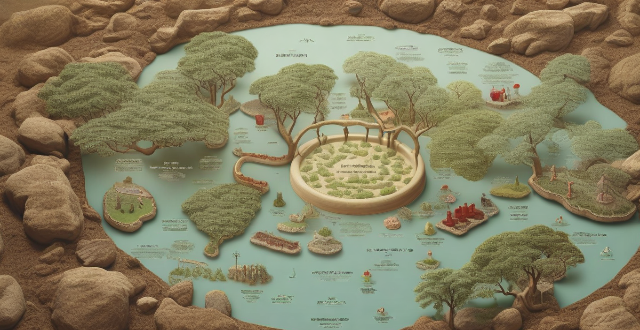
Can studying historical outbreaks provide clues to modern virus origins ?
Studying historical outbreaks can provide valuable insights into the origins and behavior of modern viruses. By analyzing past pandemics, we can gain a better understanding of how viruses spread, evolve, and affect human populations. This knowledge can be used to develop better prevention and control strategies for future outbreaks, ultimately saving lives and improving global health outcomes.

What are some common mistakes students make when studying history, and how can they be avoided ?
When studying history, students often make mistakes that hinder their understanding and retention of the subject matter. Here are some common pitfalls and strategies to avoid them: 1. **Not Understanding the Big Picture**: Many students focus on memorizing dates and events without grasping the broader context or interconnectedness of historical occurrences. To avoid this, they should contextualize information, seek connections between events, and utilize visual aids like maps and timelines. 2. **Relying Solely on Rote Memorization**: Merely memorizing facts without comprehension leads to short-term retention at best. Students should engage with the material actively, apply historical concepts, and try teaching the subjects to others to reinforce their understanding. 3. **Ignoring Primary Sources**: Some students rely solely on secondary sources, neglecting primary sources that offer firsthand accounts of historical events. Incorporating and critically analyzing primary sources can provide a fuller, more nuanced understanding of history. 4. **Failing to Connect History with Other Subjects**: Treating history as isolated from other disciplines limits its educational potential. Students should explore interdisciplinary connections, integrate different perspectives, and participate in cross-curricular projects to deepen their historical knowledge. By avoiding these pitfalls, students can enhance their understanding of history and develop valuable critical thinking skills.
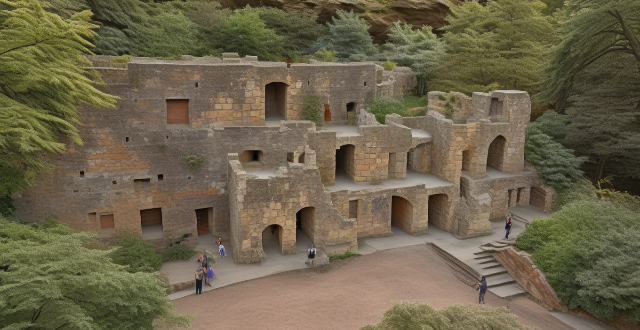
What are the must-see historical sites in South America ?
South America boasts a wealth of historical sites that showcase the continent's rich history and culture. Must-see locations include Machu Picchu in Peru, Christ the Redeemer in Brazil, Iguazu Falls on the Argentina-Brazil border, Cusco in Peru, Cartagena in Colombia, and Valparaiso in Chile. These sites offer visitors a chance to explore ancient ruins, natural wonders, colonial architecture, and vibrant art scenes.

What are some of the most culturally rich travel destinations ?
Traveling is not only about seeing new places, but also about experiencing new cultures. Here are some of the most culturally rich travel destinations in the world: Paris is known as the "City of Love" and is one of the most romantic cities in the world. It's also a cultural hub with numerous museums, art galleries, and historical landmarks. Rome is an open-air museum with its ancient ruins, Renaissance architecture, and Baroque fountains. It's also a food lover's paradise with its delicious Italian cuisine. Beijing is a city where ancient history meets modernity. It's home to numerous historical sites such as the Great Wall and the Forbidden City. The city is also known for its Peking duck and traditional Chinese medicine. New Orleans is a melting pot of cultures with its unique blend of African, French, Spanish, and American influences. It's famous for its jazz music, Mardi Gras celebrations, and Creole cuisine.

How do you use historical data to make predictions about future stock market performance ?
Predicting the stock market's future performance is a complex task that involves analyzing various factors. One common method used by investors and analysts is to study historical data, which can help make informed predictions about future market performance. To use historical data for stock market predictions, it is essential to identify key metrics such as price movements, volume, earnings reports, and economic indicators. Once these metrics are identified, analyze the historical data to identify trends and patterns through technical analysis techniques like moving averages, support and resistance levels, and candlestick patterns. Additionally, consider using fundamental analysis to evaluate underlying factors that drive stock prices, such as financial statements, industry trends, and macroeconomic factors. With the advancement of technology, machine learning and AI models have become popular tools for predicting stock market performance, including neural networks, reinforcement learning, and deep learning. Combining different methods of analysis can lead to more accurate predictions about future stock market performance. However, it's important to remember that no method is foolproof, and there will always be an element of risk involved in investing in the stock market.
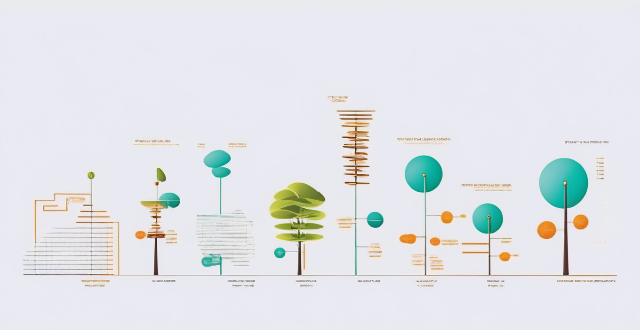
What is climate forecasting ?
Climate forecasting is the application of scientific knowledge and techniques to predict future climate conditions. It involves analyzing historical and current weather patterns, as well as understanding the physical processes that drive them, in order to make predictions about future climate trends. Key components of climate forecasting include data collection, modeling, analysis, and prediction. Climate forecasting plays a crucial role in various sectors including agriculture, water resources management, energy production, and disaster risk reduction. Despite challenges such as the complexity of the climate system and limited historical data, continued research and advancements in technology will improve our ability to predict future climate trends accurately.
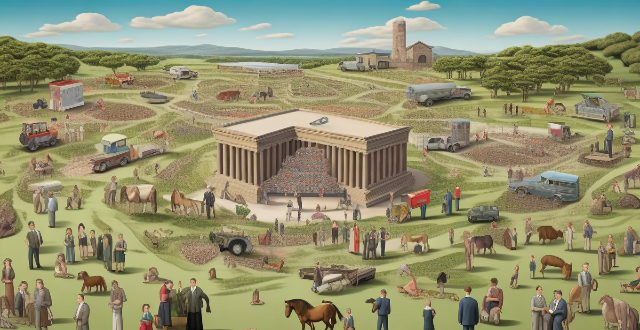
In what ways does sports culture contribute to national identity ?
Sports culture significantly contributes to national identity by representing national values, promoting cultural exchange and diplomacy, preserving historical traditions, evoking national pride and unity, and enhancing economic growth. It serves as a powerful tool for uniting people under a common banner and showcasing the unique character of a nation to the world.

What role does cinematography play in making sports movies engaging ?
Cinematography plays a crucial role in making sports movies engaging by capturing the essence of athleticism and the drama of competition. Through the use of various filmmaking techniques, cinematographers can bring the excitement and emotions of sports to life on the screen. Here are some ways in which cinematography contributes to the appeal of sports movies: 1. Dynamic Camera Movement - Tracking shots, crane shots, and handheld shots create a sense of speed and momentum, reveal the scale of stadiums and crowds, and create an intimate, immersive experience for the viewer. 2. Creative Angles and Perspectives - Low angles make athletes appear powerful and dominant, high angles show the vulnerability or isolation of a character within a vast arena, and point-of-view shots allow the audience to see what the athlete sees, enhancing their connection to the action. 3. Lighting and Color - Contrast and shadows highlight the physicality of sport and the intensity of effort, color grading is used to convey mood, team identity, or historical eras, and backlighting creates a dramatic effect around athletes, often used in climactic moments. 4. Slow Motion and Fast Motion - Slow motion extends key moments to emphasize grace, power, or impact, while fast motion compresses time to show training sequences or build anticipation. 5. Special Effects and Visual Effects (VFX) - Chromakeying isolates athletes against different backgrounds for creative storytelling, CGI recreates historical events or enhances visually complex sports like underwater scenes, and compositing combines multiple layers of footage for dynamic scenes that couldn't be captured live. 6. Sound Design - Audio effects synch sound effects with visuals to heighten the impact of movements, and musical score supports the visuals, enhancing tension or celebration. 7. Editing Pace - Quick cuts build excitement during high-intensity moments, while long takes sustain tension during crucial plays or showcase skillful execution. 8. Storytelling through Visuals - Symbolic images use iconic sports imagery to tell stories without dialogue, and composition arranges elements within the frame to guide the audience's focus. 9. Emotional Engagement - Close-ups show facial expressions and reactions, drawing viewers into the emotional state of athletes, and environmental interaction captures interactions between athletes and their surroundings, like skimming fingers on a track or splashes in a pool. 10. Juxtaposition and Montage - Narrative montage tells backstory or parallel plotlines through a series of short, thematically connected shots, while contrast montage compares different worlds or states of mind by cutting between contrasting scenes. In summary, cinematography is not just a tool for aesthetic enhancement in sports movies; it is a language that translates the physicality, emotion, and narrative of sports into a compelling visual experience. By masterfully employing these techniques, filmmakers can transform a simple game into an unforgettable cinematic journey.

How have historical female figures influenced modern-day feminism and women's rights movements ?
This article explores how historical female figures have influenced modern-day feminism and women's rights movements. It discusses early pioneers like suffragettes and abolitionists, civil rights era figures such as Rosa Parks and Coretta Scott King, second-wave feminists including Betty Friedan and Gloria Steinem, and modern-day feminists like Malala Yousafzai and the #MeToo movement. These individuals have played crucial roles in shaping the course of feminism and women's rights movements, paving the way for future generations to fight for equality and justice.

How have historical events impacted the acceptance and participation of women in various sports throughout time ?
The text discusses how historical events and societal norms have influenced women's participation in sports throughout history. In ancient civilizations like Greece and Rome, women were generally excluded from athletic competitions due to cultural beliefs and expectations about their roles. During the Middle Ages, their involvement remained limited, with some exceptions for practical purposes. The Industrial Revolution brought slight progress as leisure time increased, but gender stereotypes still hindered women's participation. Pioneering figures in the late 19th and early 20th centuries began promoting women's sports, leading to the inclusion of women's events in the Olympics. After World War II, there was a push for gender equality, including in sports, resulting in increased opportunities for female athletes. Today, while women participate in a wider range of sports than ever before, challenges such as unequal treatment persist, requiring continued advocacy for gender equity in sports.
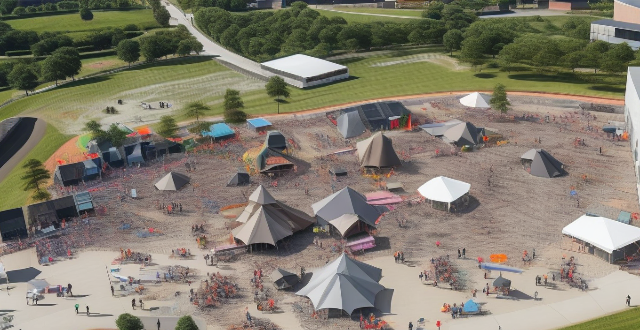
How do food festivals promote cultural diversity and understanding ?
Food festivals are significant events that promote cultural diversity and understanding by offering educational opportunities, exposing attendees to new flavors, building community, impacting the economy positively, providing entertainment, enhancing social media presence and awareness, and promoting sustainability initiatives. These festivals facilitate cross-cultural dialogue, break down cultural barriers, and encourage a shared appreciation for global cuisine.

What are some unique and creative ways to celebrate St. Patrick's Day ?
St. Patrick's Day is a holiday that celebrates the patron saint of Ireland, Saint Patrick. It is traditionally celebrated on March 17th and is known for its festive atmosphere, green clothing, and Irish-themed activities. Here are some unique and creative ways to celebrate this special day: 1. Host a Themed Party: A themed party is an excellent way to get into the spirit of St. Patrick's Day. You can choose from various themes such as leprechauns, Celtic mythology, or Irish folklore. Decorate your home with green balloons, streamers, and shamrock cutouts to create a festive atmosphere. 2. Cook Traditional Irish Foods: Food is an essential part of any celebration, and St. Patrick's Day is no exception. Cooking traditional Irish foods like corned beef and cabbage, shepherd's pie, or Irish soda bread can add authenticity to your celebration. 3. Enjoy Irish Music and Dance: Music and dance play a significant role in Irish culture. Play traditional Irish music like jigs, reels, and ballads during your celebration to set the mood. You can also learn some simple Irish dance steps like the jig or reel to get everyone involved. 4. Wear Green Clothing and Accessories: Wearing green is a longstanding tradition on St. Patrick's Day. Encourage your guests to wear green clothing and accessories to show their support for the holiday. You can even host a contest for the best dressed person in green! 5. Participate in Local Parades and Festivals: Many cities around the world host parades and festivals celebrating St. Patrick's Day. Check your local listings to see if there are any events happening near you that you can attend with friends and family. These events often feature live music, food vendors, and fun activities for all ages.
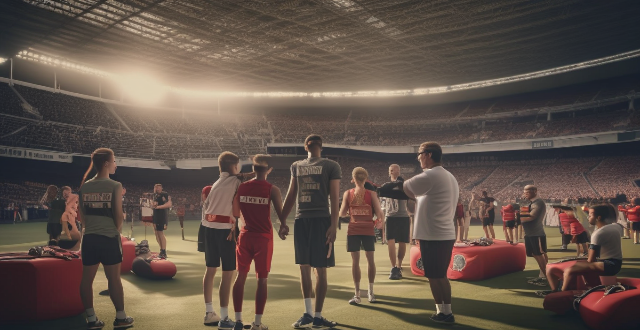
How do sports movies contribute to the overall perception and culture of sports ?
Sports movies have a significant impact on sports culture by inspiring and motivating people to engage in physical activities, promoting sportsmanship values, providing entertainment value, and serving as educational tools. They showcase the dedication and perseverance required for success in sports, often through the journey of an underdog overcoming challenges. These films also promote teamwork, fair play, and respect for opponents, highlighting the importance of sports in society and their ability to unite diverse communities. Additionally, sports movies are highly entertaining, featuring thrilling action sequences, intense competition, and compelling characters that captivate audiences. Finally, they can teach viewers about the history, rules, and techniques of various sports, enhancing knowledge and appreciation for these activities. Overall, sports movies contribute significantly to shaping our perception of athletics and encouraging participation in sports.

How can we promote diversity and inclusion in a multicultural society ?
This topic discusses strategies to promote diversity and inclusion in a multicultural society, including education, legislation, community engagement, media representation, business leadership, and personal actions.

What is Singles' Day (Double 11 Shopping Carnival) and how did it originate ?
Singles' Day, also known as Double 11 Shopping Carnival, is an annual event celebrated on November 11th in China. It originated as a day for single people to celebrate their independence and has since evolved into the world's largest e-commerce shopping festival. The origin of Singles' Day can be traced back to Nanjing University in the early 1990s, where a group of students decided to celebrate their single status by organizing a party on November 11th. The idea caught on, and soon other universities began celebrating Singles' Day as well. In 2009, Alibaba noticed the growing popularity of Singles' Day among young people and decided to turn it into a shopping event by offering discounts and promotions specifically for this day. Singles' Day has become a crucial part of China's economy, generating billions of dollars in revenue each year. It not only benefits e-commerce platforms but also supports small businesses and manufacturers who rely on online sales to reach consumers. While initially celebrated by single individuals, Singles' Day has now become a cultural phenomenon that transcends relationship status. It represents consumerism and the power of technology in modern society while highlighting changing attitudes towards marriage and relationships in China.
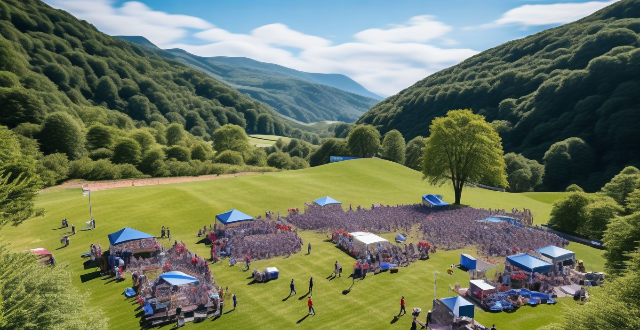
How can sports media cover events in a way that celebrates multiculturalism ?
Sports media can celebrate multiculturalism by embracing diversity in reporting, celebrating cultural traditions, promoting inclusive commentary, and educating audiences. This includes highlighting athlete backgrounds, language inclusivity, featuring pre-game and halftime shows, fan engagement, diverse commentary teams, and interactive education. By doing so, sports media can become a platform for cultural exchange and celebration, enriching the viewing experience and fostering greater understanding among diverse audiences worldwide.

The reason why the Red Army was forced into the long march_ Significance and historical value of the long march

How can I make my New Year's Eve party more memorable and unique ?
To make your New Year's Eve party stand out, consider unique themes, interactive installations, countdown kits, entertainment options, special food and drinks, and memorable favors. These elements will help create a fun and unforgettable experience for you and your guests.

What happens at a movie premiere ?
A movie premiere is a glamorous event that marks the first public screening of a film. It typically includes red carpet arrivals, media interviews, fashion statements, anticipation builds during the screening, reactions from the audience, applause at the end of the film, a question and answer session with the cast and crew, insightful questions from the audience, behind-the-scenes stories shared by the creators, thank yous expressed by the team, an afterparty for networking and socializing, celebration among cast and crew members, fun activities such as music, dancing, and food. Overall, a movie premiere combines glitz and glamour with genuine appreciation for cinematic artistry.

What are the benefits of having a strong support system for women in managing relationships ?
The article discusses the importance of a strong support system for women in managing relationships. It highlights the benefits of emotional support, advice and guidance, accountability, stress reduction, personal growth, celebration of milestones, and safe space for self-expression that a robust support network provides. The text also suggests ways to cultivate such a support system, including staying connected, being supportive, joining groups, seeking professional help, and ensuring reciprocity in relationships. Overall, the article emphasizes the role of a strong support system in helping women navigate the complexities of personal connections with confidence and resilience.

How do different cultures celebrate holidays with food ?
Food plays a significant role in various cultures around the world. Different cultures have unique ways of celebrating holidays with food. For example, during Chinese New Year, people enjoy dishes like dumplings (symbolizing wealth) and fish (representing abundance). In the United States, Thanksgiving is celebrated with turkey (symbolizing plenty), pumpkin pie (representing the harvest season), and stuffing/dressing (made with bread and herbs, signifying gratitude and fullness). Christmas is celebrated differently across the world, with traditions like Christmas Pudding in the United Kingdom, Roast Goose in Germany, and La Befana in Italy. Hanukkah is celebrated with latkes (potato pancakes representing resilience and joy) and sufganiyot (jelly-filled doughnuts symbolizing happiness and freedom). Eid al-Fitr is celebrated by breaking fast with dates (representing renewal and purity) and sharing sweets like baklava (symbolizing abundance and celebration). Diwali is celebrated with laddoo (ball-shaped sweets representing unity and happiness) and barfi (a fudge-like dessert symbolizing prosperity and delight). Food not only nourishes but also brings people together during holidays, expressing gratitude, sharing abundance, and strengthening community bonds through delicious meals and sweets.